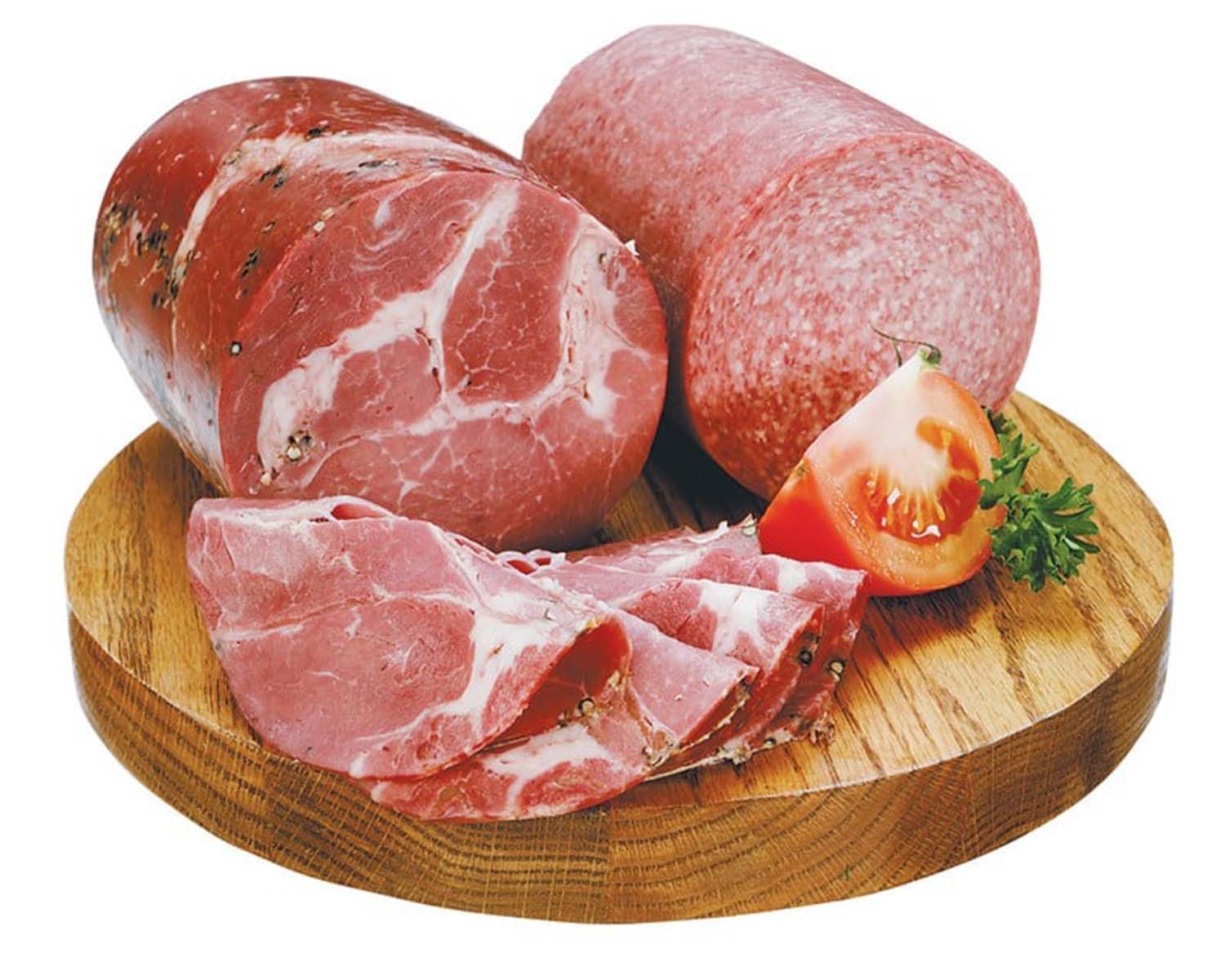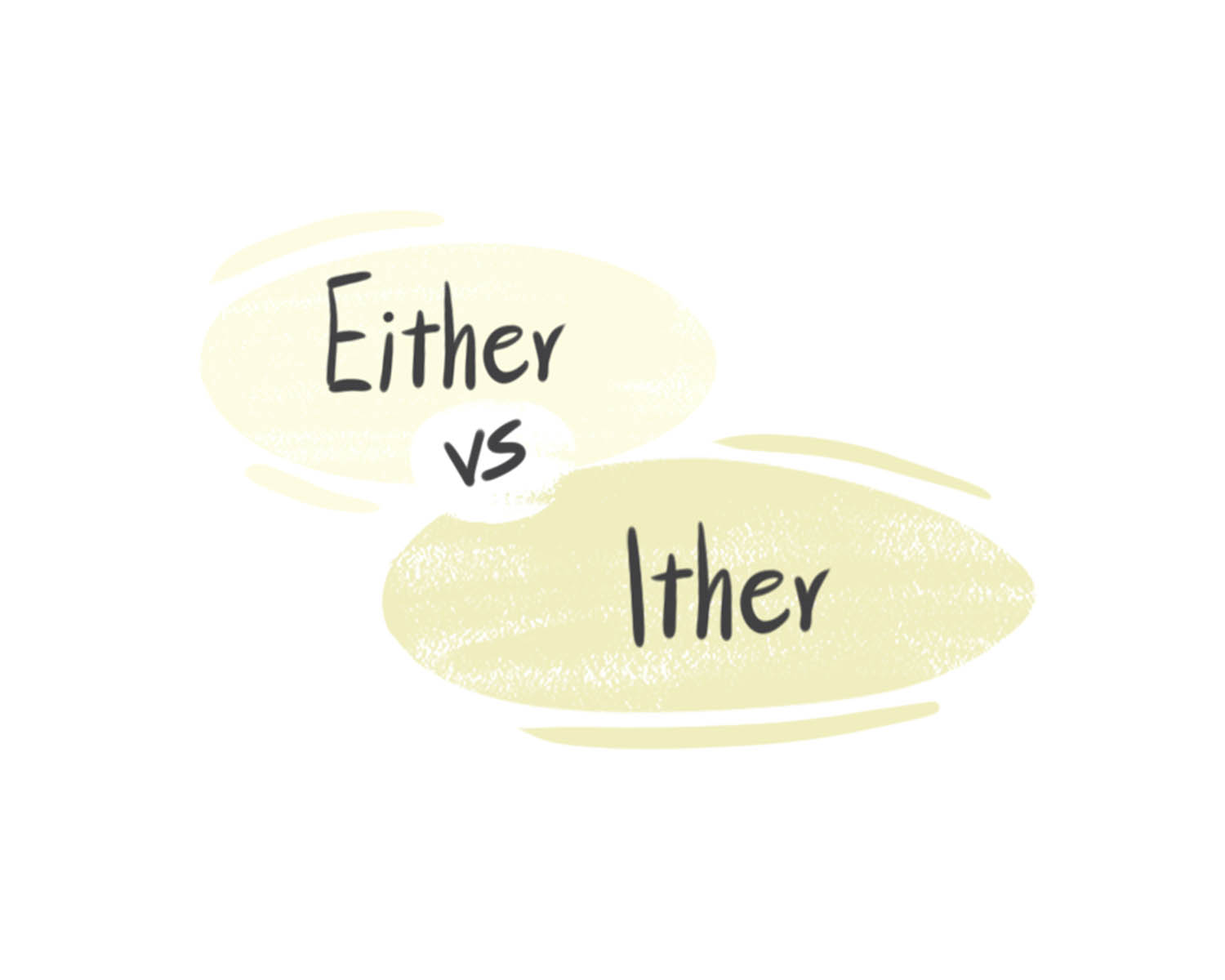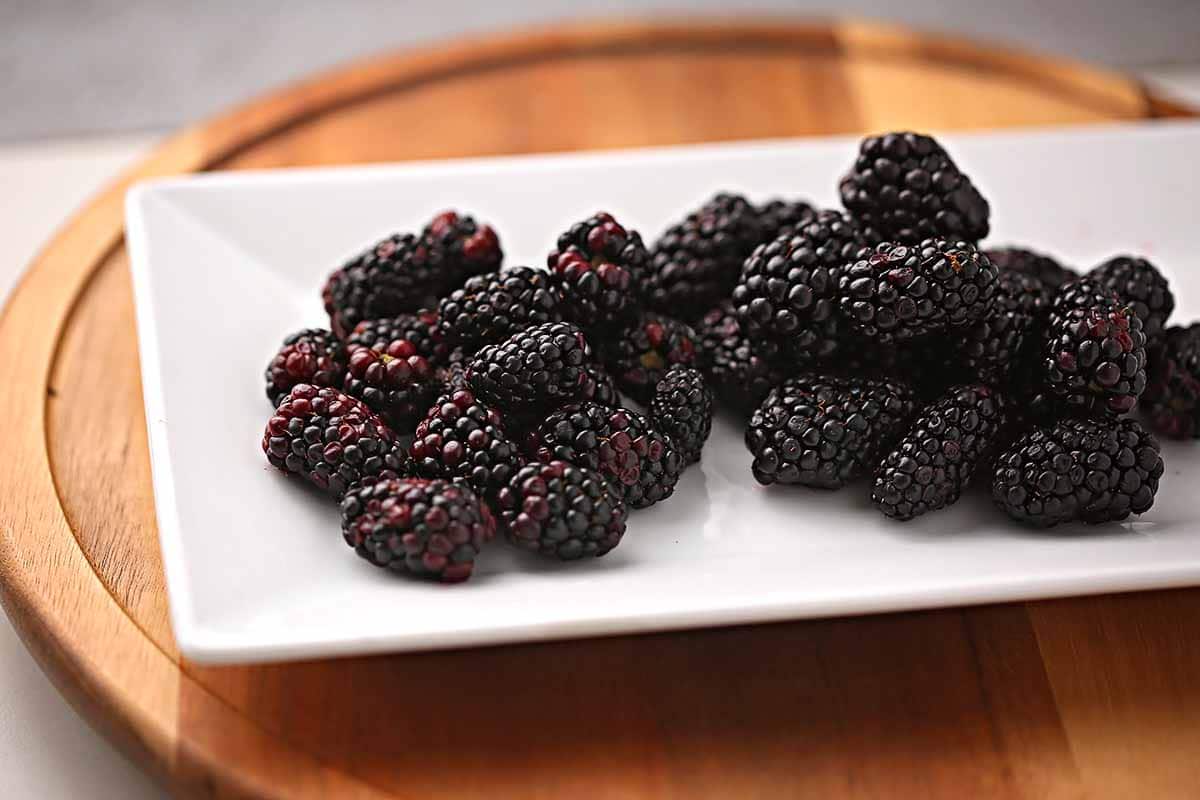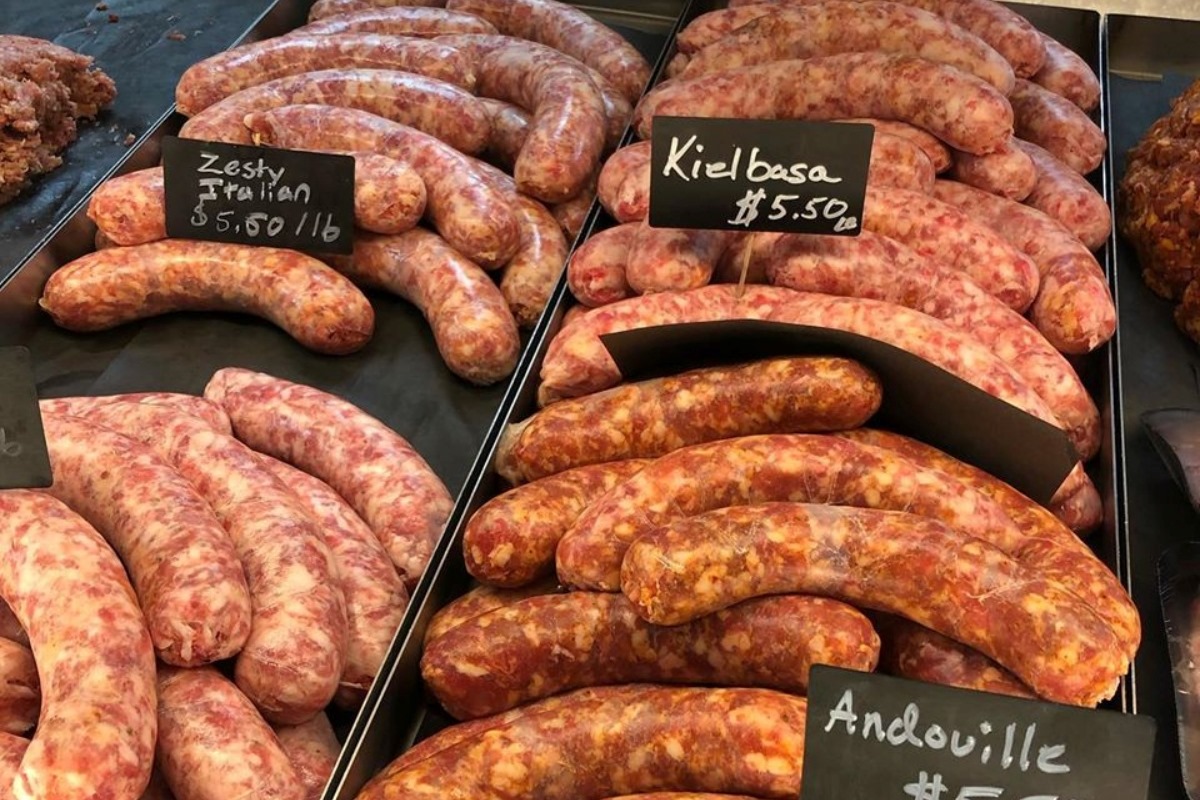Home>Food and Cooking>The Surprising Differences Between Japanese Shabu-Shabu And Chinese Hot Pot
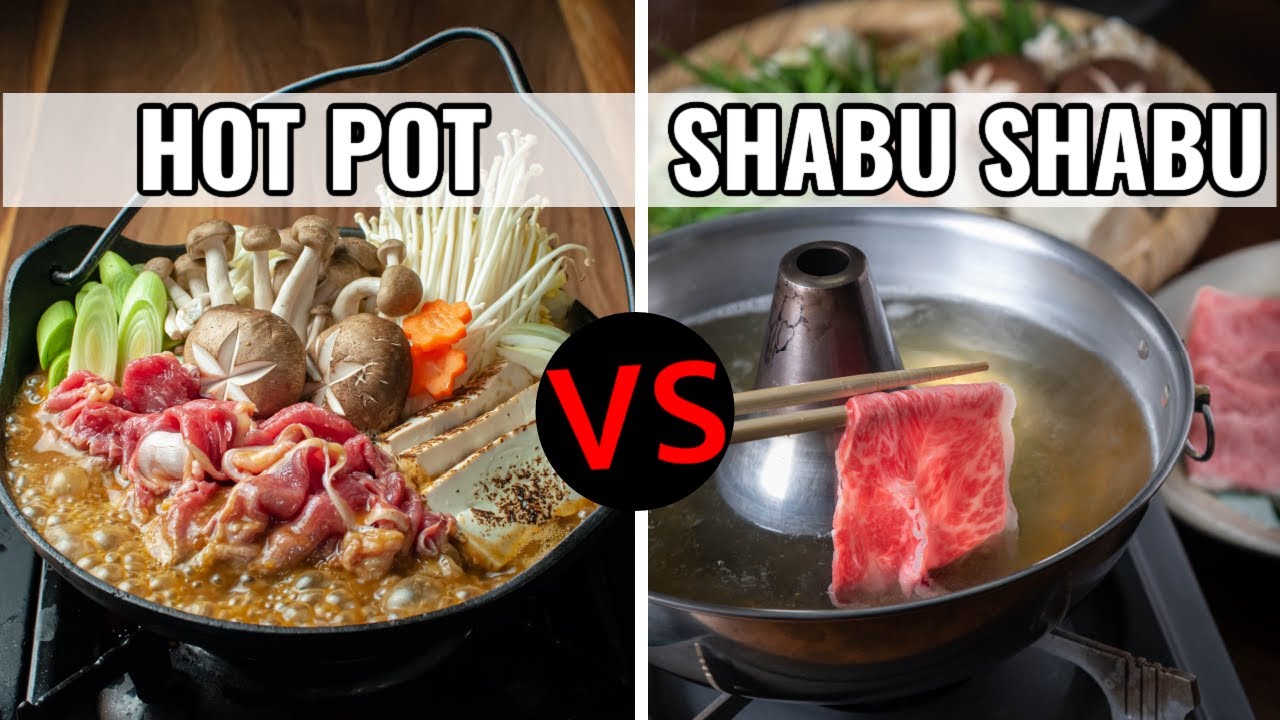

Food and Cooking
The Surprising Differences Between Japanese Shabu-Shabu And Chinese Hot Pot
Published: January 30, 2024
Discover the unique flavors of Japanese Shabu-Shabu and Chinese Hot Pot in this insightful comparison. Explore the distinct cooking methods and ingredients. Uncover the secrets of these popular Asian cuisines.
(Many of the links in this article redirect to a specific reviewed product. Your purchase of these products through affiliate links helps to generate commission for Noodls.com, at no extra cost. Learn more)
Table of Contents
Introduction
Japanese Shabu-Shabu and Chinese Hot Pot are two beloved culinary traditions that have gained international acclaim for their unique flavors and interactive dining experiences. Despite their apparent similarities, these two hot pot styles boast distinct characteristics that set them apart. From the choice of ingredients and cooking methods to the cultural significance, each offers a delightful journey into the heart of Asian cuisine.
The art of Shabu-Shabu and Hot Pot lies in the communal aspect of cooking and sharing a meal. Both are deeply rooted in the concept of bringing people together around a steaming pot of broth, where they can bond over the joy of preparing and savoring a variety of fresh ingredients. As the aromas waft through the air and the broth simmers enticingly, diners are invited to partake in a culinary adventure that transcends mere sustenance.
In this exploration of Japanese Shabu-Shabu and Chinese Hot Pot, we will delve into the fascinating nuances that distinguish these two culinary traditions. From the historical origins to the intricate details of ingredient selection, cooking techniques, and regional variations, we will uncover the rich tapestry of flavors and cultural significance that define Shabu-Shabu and Hot Pot. Through this journey, we will gain a deeper appreciation for the culinary heritage and the art of communal dining that these traditions embody.
Join us as we embark on a captivating odyssey through the tantalizing world of Shabu-Shabu and Hot Pot, and discover the surprising differences that make each of these dining experiences a culinary delight in its own right.
History and Origins
The rich history and origins of Japanese Shabu-Shabu and Chinese Hot Pot reflect the cultural significance and culinary evolution of these beloved traditions.
Japanese Shabu-Shabu
Shabu-Shabu, with its roots tracing back to the early 20th century, is a culinary gem that emerged during the Meiji era in Japan. The term "Shabu-Shabu" is derived from the sound produced when thinly sliced meat is swished back and forth in the simmering broth. This delightful onomatopoeic name encapsulates the essence of the cooking method, as diners engage in the rhythmic motion of swishing the meat to achieve the perfect doneness.
The evolution of Shabu-Shabu can be attributed to the influence of Western cuisine during Japan's modernization. The introduction of beef as a prominent ingredient marked a departure from the traditional Japanese diet, reflecting a shift in culinary preferences and the assimilation of foreign culinary techniques. Over time, Shabu-Shabu has become synonymous with elegance and refinement, often enjoyed during special occasions and celebrations.
Chinese Hot Pot
In contrast, Chinese Hot Pot boasts a history that spans centuries, dating back to the Eastern Han Dynasty. Its origins can be traced to the northern regions of China, where the frigid winters inspired the creation of a communal cooking style that provided warmth and nourishment. The concept of sharing a simmering pot of broth and cooking an assortment of ingredients resonated deeply with the Chinese culinary ethos of communal dining and familial bonds.
Hot Pot's enduring popularity can be attributed to its adaptability and regional diversity. Each province in China has contributed its own unique ingredients and flavor profiles to the Hot Pot tradition, resulting in a tapestry of regional variations that showcase the country's culinary diversity.
The historical evolution of Shabu-Shabu and Hot Pot reflects the cultural underpinnings and culinary ingenuity of the Japanese and Chinese people. These traditions have transcended time, preserving the essence of communal dining and the art of savoring a shared meal, making them cherished culinary legacies that continue to captivate food enthusiasts worldwide.
Ingredients and Broth
The selection of ingredients and the composition of the broth form the foundational elements that distinguish Japanese Shabu-Shabu and Chinese Hot Pot, offering a tantalizing array of flavors and textures that cater to diverse palates.
Japanese Shabu-Shabu
In the realm of Shabu-Shabu, emphasis is placed on premium, thinly sliced marbled beef, such as the renowned Wagyu beef, celebrated for its exquisite tenderness and rich umami flavor. The delicate marbling of the beef enhances the succulence and depth of the meat, elevating the dining experience to a luxurious realm. Alongside the prized beef, Shabu-Shabu features an assortment of fresh vegetables, including Napa cabbage, shiitake mushrooms, enoki mushrooms, and tofu, adding a vibrant medley of colors and textures to the ensemble. The broth, typically a kombu (seaweed) or kelp-based dashi, infuses the ingredients with a delicate umami essence, complementing the natural flavors without overpowering the palate.
Chinese Hot Pot
In the realm of Chinese Hot Pot, the ingredient selection reflects a broader spectrum of offerings, catering to a diverse range of tastes and preferences. The protein options encompass thinly sliced lamb, beef, pork, and an assortment of seafood, including prawns, fish balls, and squid. The vegetable medley is equally diverse, featuring leafy greens, lotus root, winter melon, and an assortment of mushrooms, providing a harmonious interplay of flavors and textures. The hallmark of Chinese Hot Pot lies in the versatility of the broth, which can be divided into spicy and non-spicy variations. The spicy broth, infused with Sichuan peppercorns, dried chilies, and a medley of aromatic spices, delivers a fiery kick that tantalizes the senses, while the non-spicy counterpart offers a milder, savory profile that allows the natural flavors of the ingredients to shine through.
The contrast in ingredient selection and broth composition encapsulates the distinct culinary identities of Shabu-Shabu and Hot Pot, offering a captivating glimpse into the diverse flavor profiles and culinary philosophies that define these cherished traditions. Whether indulging in the opulence of Wagyu beef in Shabu-Shabu or savoring the dynamic interplay of spices in Chinese Hot Pot, each culinary journey promises a symphony of flavors that celebrate the art of communal dining and culinary excellence.
Cooking Method
The cooking method employed in Japanese Shabu-Shabu and Chinese Hot Pot is a captivating spectacle that embodies the essence of interactive dining and culinary artistry. While both traditions share the communal aspect of cooking and sharing a meal, the specific techniques and nuances of the cooking process distinguish these two culinary experiences.
In Japanese Shabu-Shabu, the cooking method revolves around the delicate art of swishing thinly sliced meat and vegetables in the simmering broth. Diners are provided with individual wire ladles, known as shabu-shabu, to elegantly swish the ingredients back and forth in the broth until they reach the desired level of doneness. The rhythmic motion of swishing the meat not only imparts a tender texture but also enhances the flavors as the meat absorbs the essence of the broth. This interactive process invites diners to engage in the culinary alchemy, ensuring that each morsel is imbued with the rich umami flavors of the broth.
On the other hand, Chinese Hot Pot embraces a more communal and dynamic approach to cooking. A large pot, divided into two sections to accommodate both the spicy and non-spicy broths, sits at the center of the table, inviting diners to partake in the culinary symphony. The raw ingredients, ranging from thinly sliced meats to an assortment of vegetables and seafood, are placed on the table, allowing diners to select their preferred items for cooking. The sizzling broth serves as the stage for the culinary theater, as diners deftly immerse their chosen ingredients into the simmering liquid, eagerly awaiting the transformation as the rawness gives way to succulent tenderness. This shared experience fosters a sense of camaraderie and conviviality, as diners bond over the joy of preparing and savoring the communal feast.
The contrasting cooking methods of Shabu-Shabu and Hot Pot offer a captivating glimpse into the culinary ethos of Japan and China, reflecting the cultural nuances and dining traditions that have been cherished for generations. Whether partaking in the graceful swishing of meat in Shabu-Shabu or reveling in the communal fervor of Chinese Hot Pot, each cooking method embodies the art of interactive dining and the celebration of culinary craftsmanship.
Dipping Sauces
The art of dipping sauces adds a flavorful dimension to the dining experience in both Japanese Shabu-Shabu and Chinese Hot Pot, offering a tantalizing array of condiments that complement and elevate the natural flavors of the cooked ingredients.
Japanese Shabu-Shabu
In the realm of Shabu-Shabu, the dipping sauces are characterized by their simplicity and emphasis on enhancing the natural umami flavors of the ingredients. The most traditional and revered dipping sauce is the goma dare, a creamy sesame-based condiment that imparts a nutty richness to the tender slices of meat and vegetables. The goma dare is crafted by blending toasted sesame seeds, soy sauce, mirin, and a hint of sugar, resulting in a luscious and velvety texture that envelops the palate in a harmonious medley of flavors. Another popular dipping sauce is the ponzu, a citrus-infused soy sauce that adds a refreshing zing to the succulent morsels. The tangy notes of the ponzu, derived from the yuzu fruit or sudachi, provide a delightful contrast to the richness of the meat, creating a symphony of flavors that dance on the taste buds.
Chinese Hot Pot
In the realm of Chinese Hot Pot, the dipping sauces embrace a diverse array of flavors and textures, reflecting the regional variations and individual preferences. A staple in the Hot Pot dining experience is the fiery and piquant lao gan ma, or spicy chili crisp, which adds a fiery kick to the cooked meats and vegetables. The complex layers of heat and umami in the lao gan ma elevate the dining experience, infusing each bite with a tantalizing heat that lingers on the palate. Additionally, a popular choice is the sesame dipping sauce, crafted from roasted sesame paste, soy sauce, and a hint of vinegar, offering a luscious and nutty accompaniment to the tender meats and crisp vegetables. The interplay of flavors in the sesame dipping sauce adds a luxurious depth to the dining experience, enriching each morsel with a velvety embrace of savory richness.
The contrast in dipping sauces encapsulates the diverse culinary identities of Shabu-Shabu and Hot Pot, offering a captivating glimpse into the nuanced art of flavor pairing and culinary finesse. Whether indulging in the delicate nuttiness of goma dare in Shabu-Shabu or savoring the fiery heat of lao gan ma in Chinese Hot Pot, each dipping sauce promises an enchanting journey of flavors that celebrate the art of communal dining and culinary excellence.
Serving Style
The serving style in Japanese Shabu-Shabu and Chinese Hot Pot is a captivating reflection of the cultural nuances and dining traditions that define these culinary experiences. While both traditions share the communal aspect of dining, the serving styles encompass distinct elements that contribute to the overall ambiance and dining rituals.
In Japanese Shabu-Shabu, the serving style exudes an air of elegance and refinement, underscoring the meticulous attention to detail and the pursuit of culinary artistry. The focal point of the dining table is the shabu-shabu pot, an exquisite vessel that holds the simmering broth and serves as the centerpiece of the communal feast. The pot, often crafted from high-quality materials such as ceramic or cast iron, exudes a sense of tradition and sophistication, adding a touch of ceremonial grandeur to the dining experience. Surrounding the pot are meticulously arranged platters of thinly sliced meats, vibrant vegetables, and an assortment of dipping sauces, creating a visual tapestry of colors and textures that beckon diners to partake in the culinary spectacle. The precision and artistry in the presentation reflect the reverence for the dining ritual, elevating the act of sharing a meal into a symphony of sensory delights.
In contrast, Chinese Hot Pot embraces a more convivial and dynamic serving style that fosters a sense of camaraderie and communal revelry. The centerpiece of the dining table is the dual-sided hot pot, divided into the spicy and non-spicy sections, symbolizing the duality of flavors that awaits exploration. The expansive spread of raw ingredients, arranged in bountiful platters, invites diners to partake in the interactive process of selecting and cooking their preferred items. The bustling energy and animated conversations that fill the air reflect the convivial nature of the Hot Pot dining experience, as diners engage in the communal act of cooking and sharing a meal. The serving style embodies the spirit of inclusivity and shared enjoyment, fostering a sense of togetherness and conviviality that transcends the act of dining.
The contrasting serving styles of Shabu-Shabu and Hot Pot offer a captivating glimpse into the cultural nuances and dining traditions of Japan and China, reflecting the reverence for culinary artistry and the celebration of communal dining. Whether savoring the refined elegance of Shabu-Shabu or reveling in the convivial fervor of Chinese Hot Pot, each serving style embodies the cultural heritage and the art of shared dining experiences.
Regional Variations
The regional variations of Japanese Shabu-Shabu and Chinese Hot Pot offer a captivating glimpse into the diverse culinary landscapes and regional nuances that have shaped these beloved traditions. From the choice of ingredients to the flavor profiles and cooking techniques, each region has contributed its own unique imprint, resulting in a tapestry of culinary diversity that celebrates the art of communal dining.
Japanese Shabu-Shabu
In Japan, the regional variations of Shabu-Shabu reflect the country's rich culinary heritage and the diverse bounty of ingredients found across its islands. The Kansai region, known for its emphasis on pristine produce and delicate flavors, favors a milder and more refined approach to Shabu-Shabu. Here, the emphasis is placed on the quality of the ingredients, with an emphasis on locally sourced vegetables and the renowned Tajima beef, celebrated for its exquisite marbling and tender texture.
In contrast, the Kanto region, particularly Tokyo, embraces a heartier and more robust interpretation of Shabu-Shabu, with a focus on bold flavors and a penchant for indulgence. The use of premium Wagyu beef, characterized by its intense marbling and buttery richness, takes center stage, elevating the dining experience to a luxurious realm. Additionally, the Tokyo style Shabu-Shabu often features an array of specialty mushrooms and seasonal vegetables, adding a vibrant medley of textures and flavors to the ensemble.
Chinese Hot Pot
The regional variations of Chinese Hot Pot showcase the country's diverse culinary heritage and the influence of local ingredients and flavor profiles. In Sichuan, the birthplace of the fiery and aromatic Sichuan peppercorns, the Hot Pot takes on a bold and spicy persona, with a penchant for numbing heat and complex flavor profiles. The Sichuan Hot Pot is renowned for its potent broth, infused with a symphony of spices, including dried chilies, peppercorns, and a medley of aromatic herbs, creating a fiery elixir that tantalizes the senses and leaves a lingering warmth on the palate.
In contrast, the Cantonese Hot Pot, hailing from the southern coastal regions of China, embraces a more delicate and nuanced approach, focusing on the natural sweetness of the ingredients and the art of simplicity. The emphasis is placed on premium seafood, including fresh fish, prawns, and delicate fish balls, accompanied by an array of seasonal vegetables. The broth, often a clear and delicately flavored consommé, allows the natural flavors of the ingredients to shine through, creating a harmonious interplay of tastes and textures that celebrate the bounty of the sea.
The regional variations of Shabu-Shabu and Hot Pot offer a tantalizing journey through the diverse culinary landscapes of Japan and China, showcasing the regional diversity and the art of flavor exploration. Whether savoring the refined elegance of Kansai style Shabu-Shabu or indulging in the fiery fervor of Sichuan Hot Pot, each regional variation promises a symphony of flavors that celebrate the culinary heritage and the art of communal dining.
Cultural Significance
The cultural significance of Japanese Shabu-Shabu and Chinese Hot Pot extends far beyond the realm of culinary indulgence, encapsulating the values of camaraderie, familial bonds, and the art of communal dining. These cherished traditions serve as a testament to the profound impact of food in fostering connections and preserving cultural heritage.
In Japan, Shabu-Shabu embodies the ethos of refinement and elegance, reflecting the Japanese reverence for precision and artistry. The act of swishing thinly sliced meats and vegetables in the simmering broth is not merely a culinary technique; it is a ritual that invites diners to engage in the delicate dance of savoring each morsel. Shabu-Shabu transcends the act of dining, becoming a symbol of celebration and togetherness, often enjoyed during special occasions and gatherings. The emphasis on quality ingredients and the pursuit of culinary excellence reflects the Japanese commitment to honoring tradition and savoring the beauty of simplicity.
On the other hand, Chinese Hot Pot embodies the spirit of conviviality and shared enjoyment, underscoring the communal nature of dining in Chinese culture. The bustling energy that permeates the dining table, as diners select, cook, and share a myriad of ingredients, reflects the values of inclusivity and togetherness. Hot Pot serves as a unifying force, bringing families and friends together to partake in the joy of communal feasting. The act of sharing a steaming pot of broth and relishing an assortment of ingredients not only nourishes the body but also nourishes the bonds that unite individuals, fostering a sense of belonging and shared experiences.
Both Shabu-Shabu and Hot Pot serve as vessels of cultural preservation, carrying within them the traditions, values, and shared memories of generations past. Through the act of partaking in these culinary rituals, individuals are not only savoring the flavors of the dishes but also immersing themselves in the rich tapestry of cultural heritage. The significance of Shabu-Shabu and Hot Pot extends beyond the confines of the dining table, serving as a testament to the enduring power of food in uniting people and preserving the intangible essence of tradition.
In essence, the cultural significance of Japanese Shabu-Shabu and Chinese Hot Pot transcends the boundaries of gastronomy, offering a profound insight into the values, traditions, and communal spirit that define the cultural fabric of Japan and China. These cherished culinary traditions serve as a reminder of the enduring power of food in fostering connections, preserving heritage, and celebrating the art of communal dining.
Conclusion
In conclusion, the exploration of Japanese Shabu-Shabu and Chinese Hot Pot has unveiled a rich tapestry of culinary traditions, cultural significance, and regional nuances that define these beloved dining experiences. From their historical origins to the intricate details of ingredient selection, cooking methods, and serving styles, Shabu-Shabu and Hot Pot offer a captivating journey through the heart of Asian cuisine.
The surprising differences between Shabu-Shabu and Hot Pot reflect the diverse culinary identities of Japan and China, each encapsulating a unique blend of flavors, textures, and cultural significance. Shabu-Shabu, with its emphasis on elegance and refinement, embodies the Japanese commitment to precision and artistry, while Chinese Hot Pot celebrates the spirit of conviviality and shared enjoyment, reflecting the communal nature of dining in Chinese culture.
The regional variations of Shabu-Shabu and Hot Pot showcase the diverse culinary landscapes of Japan and China, offering a tantalizing exploration of flavor profiles and ingredient diversity. Whether savoring the refined elegance of Kansai style Shabu-Shabu or indulging in the fiery fervor of Sichuan Hot Pot, each regional variation promises a symphony of flavors that celebrate the culinary heritage and the art of communal dining.
Furthermore, the cultural significance of Shabu-Shabu and Hot Pot extends beyond the realm of gastronomy, serving as vessels of cultural preservation and symbols of celebration and togetherness. These cherished traditions embody the values of camaraderie, familial bonds, and the art of communal dining, fostering connections and preserving cultural heritage through the act of shared feasting.
As we conclude this exploration, it becomes evident that the allure of Shabu-Shabu and Hot Pot lies not only in the tantalizing array of flavors and interactive dining experiences but also in the profound impact of food in fostering connections and preserving cultural heritage. These culinary traditions serve as a testament to the enduring power of food in uniting people and celebrating the art of communal dining, transcending the boundaries of gastronomy to embody the values, traditions, and communal spirit that define the cultural fabric of Japan and China.



